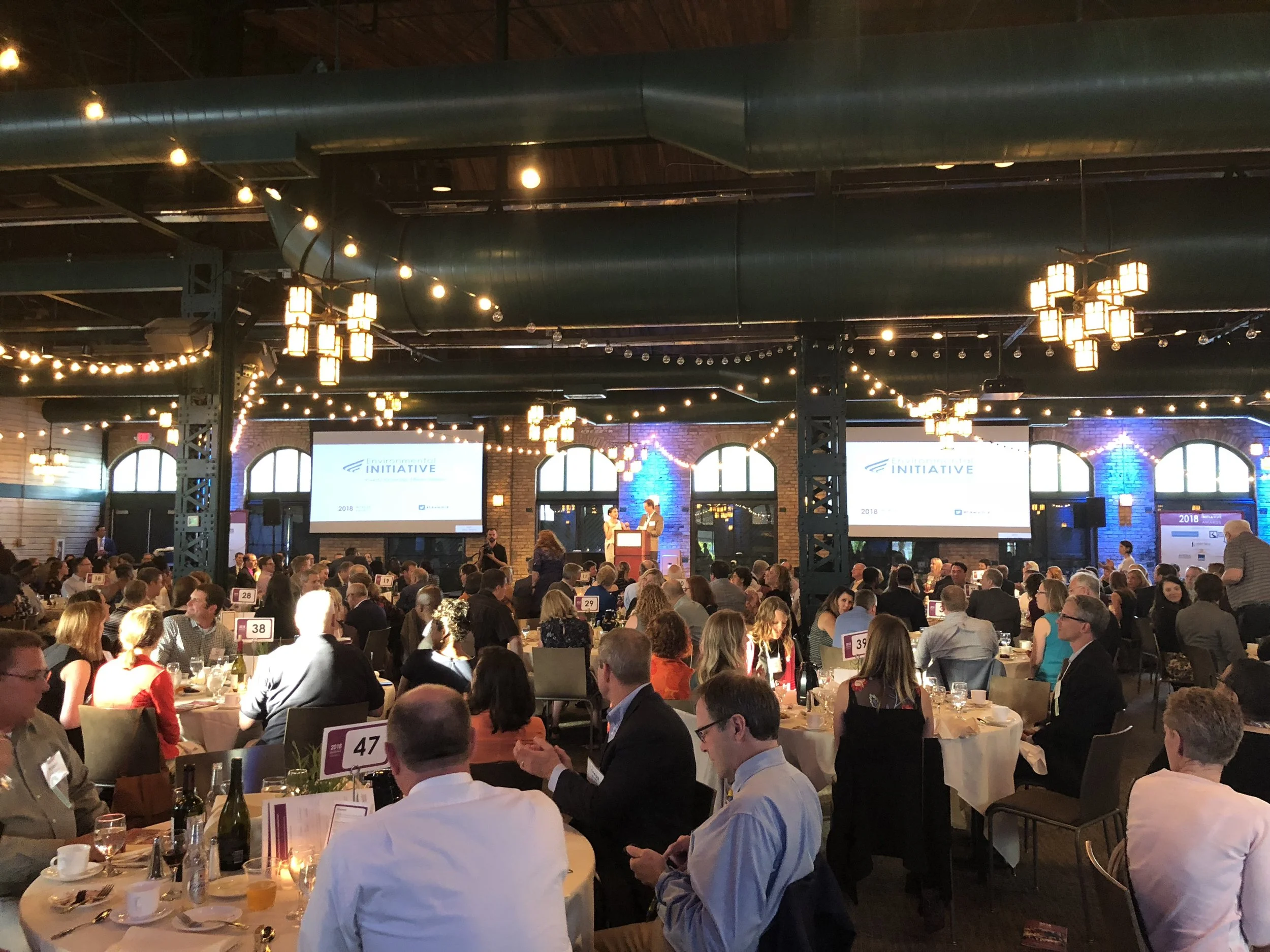If one thing that’s certain, it’s that environmental initiatives are often complex. To make a difference, leaders must inspire shifts in a chain of activity that cuts across a diverse spectrum of constituents. That’s incredibly hard.
This came clearly into focus at this year’s the 2018 Environmental Initiative Awards. This annual event held on beautiful Nicollet Island, showcases an inspiring array of achievement in our community. It’s a pretty fun evening to sit by the mighty Mississippi river and discuss ideas with those working day and night to protect this planet and its people.
All of the entries were innovative, impactful and unique in their goals, strategies and structures. Here are a few examples so you can see the range of approaches:
· Land O’Lakes Sustain is a partnership between farmers, companies and Land O’Lakes. It matches on-farm conservation with company-led sustainability targets. It’s farmer-focused, farmer-driven and uses the resources of larger organizations. These resources help farmers make sustainable and productive decisions on-farm. Land O’Lakes Sustain joins government agencies, the private sector and farmers to achieve land and water stewardship.
· Community Solar for Community Action (CS4CA) is tackling the systemic problem of energy poverty by equipping low-income communities with clean, renewable and reliable energy stability. The program also reduces carbon emissions. They create place-based solar assets that are owned by the community. These solar assets integrate renewable energy into the local energy assistance programs— making all resources more productive. The key to their success is community-based partnerships. This effort engaged utility companies, the Leech Lake Band of Ojibwe and county leadership.
· BrightSide Produce. Four years ago, two young people were upset about the lack of health options in their urban neighborhood. Their activism was guided through community mentorship and government partnership. Now they have established one of the nation’s only financially sustainable business for distributing fresh fruits and vegetables to small stores in underserved urban neighborhoods. And having succeeded in Minneapolis they are expanding their concept to San Diego, where they will be working in collaboration with San Diego State University.
These innovators and others we met that evening agree that success depends on solid insight, good ideas and strong partnerships. These partnerships typically include diverse members of the community or supply chain such as; agricultural growers, educators, government, manufacturers, distributors, marketers and consumers. The benefit (and the challenge) is that each of these relationships come with very different goals, pressures, perspectives and available resources. But all entrants were able to build cross-sector coalitions. The wins came with strategies that could tilt momentum across the supply chain and gain the most impact. That momentum is the energy needed for sustainable change.
Four winning steps you can apply to your next change initiative:
Build a network.
This includes partners with information, insight, educational resources, or connections to other stakeholders. Learn what they seek, what they value and how they might come to the table.
Map the chain of influence.
It’s important to understand everyone’s motivations, resources and influence. Map out each actor within the chain of activity and influence. Identify what motivates their actions — for or against your goal. Note what resources they can bring and how they might influence others.
Map the connections.
Hopefully you or someone from your network can provide data and insight on the stakeholders involved. Before you ask people to trade an old action for a new one, they need to see a new benefit — or feel a new pressure to change. Here’s where the strategy can be designed. What new currencies can now be traded to shift behavior in a positive way?
Implement the shift.
Employ those stakeholders with the right reach, resources or influence and start to hack the outdated system you are trying to change. Ideally this initial set of actions is low-to-no risk. This lets you earn trust with new constituents and offer proof of concept.
In this type of model, all stakeholders are rewarded in some way. Each have made some contribution of ideas, relationships, resources or just plain clout. The leadership is in building the coalition of participants, identifying the win-win scenarios and harnessing the momentum required for real change.
Hats off to all of the Environmental Initiative award winners and finalists and to those still in the trenches that we will hear from in future.
INTERESTED IN CHANGING THE MODEL?
LEARN MORE ABOUT OUR INNOVATION WORKSHOPS.

